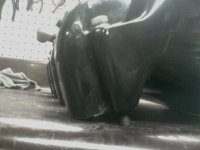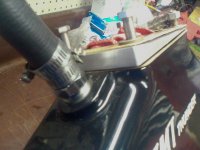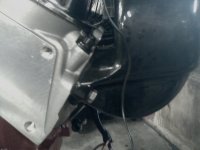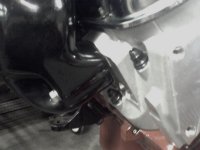Underdog88
Member
I have EMI thunder exhaust on my mild 454s and a set of 4 SS Competition egt gauges and probes(Thanks Bob!). My original plan was to mount one in each collector where I have a 1/2" aluminum wedge spacer to align my tails. This would give me a read on each side of each engine.
I've read where they should be placed @2" from the exhaust ports for best reading and can see where my original plan would give lower reading due to the distance and the water cooled manifolds.
It's going to be tuff to find a place in the manifolds while staying out of the water jackets. I may be able to put them in the rear of #7 and 8 cyls in the rear but space is very limited on the manifolds. I've attached some pics...
I'm asking for any suggestions and wondering where you guys who have them have installed them. Would the collector/wedge be so bad? I know the reading would be cooler but while reading plugs and using an Innovat wide band O2 sensor for tuning, I have access to, couldn't I get a baseline number, even though less than optimum to watch for?
What have you done and what would you do? Drill manifolds,(looks tricky) or used collector/spacer with lower temps compaired to O2 readings and plugs.
Thanks for your input!
Mark
I've read where they should be placed @2" from the exhaust ports for best reading and can see where my original plan would give lower reading due to the distance and the water cooled manifolds.
It's going to be tuff to find a place in the manifolds while staying out of the water jackets. I may be able to put them in the rear of #7 and 8 cyls in the rear but space is very limited on the manifolds. I've attached some pics...
I'm asking for any suggestions and wondering where you guys who have them have installed them. Would the collector/wedge be so bad? I know the reading would be cooler but while reading plugs and using an Innovat wide band O2 sensor for tuning, I have access to, couldn't I get a baseline number, even though less than optimum to watch for?
What have you done and what would you do? Drill manifolds,(looks tricky) or used collector/spacer with lower temps compaired to O2 readings and plugs.
Thanks for your input!
Mark








